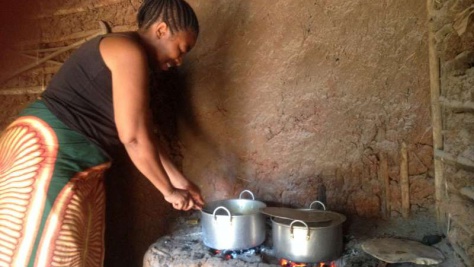Refugee women on the move in Europe are at risk, says UN

Women and children make up 55 per cent of those arriving by sea to Europe. Women are at greater risk of exploitation and violence while on the move in Europe. © UNHCR/D. Etter
GENEVA, Jan 20 (UNHCR) - Refugee and migrant women and girls on the move in Europe face grave risks of sexual and gender-based violence, UNHCR, the UN refugee agency, the United Nations Population Fund (UNFPA), and the Women's Refugee Commission (WRC) highlighted in a joint report issued today.
UNHCR, UNFPA and WRC conducted a joint field assessment of risks involved for refugee and migrant women and girls in Greece and FYR Macedonia in November 2015 and noted that women were among those particularly at risk and required additional protection measures.
The report said many refugee and migrant women and girls had already been exposed to various forms of SGBV either in their country of origin, first asylum or along the journey to and in Europe.
Some of the women interviewed by the mission described being forced to engage in transactional sex to "pay for" travel documents or their journey. Some women and girls were so reluctant to delay their journey and that of their families that they refused to report SGBV crimes or seek medical attention.
"Many women and girls travelling on their own are entirely exposed, deprived of their family or community to protect them," Director of UNHCR's Bureau for Europe, Vincent Cochetel said. "And even those traveling with family are often vulnerable to abuse. Often they are not reporting crimes and thus not receiving the support they need. Some women have even told us they have married out of desperation."
This joint venture was the first among several field missions and profiling exercises that aid and advocacy agencies are conducting to accurately assess the problems on the ground and recommend key actions to address these concerns.
The report noted: "Single women travelling alone or with children, pregnant and lactating women, adolescent girls, unaccompanied children, early-married children - sometimes themselves with newborn babies - persons with disabilities, and elderly men and women are among those who are particularly at risk and require a coordinated and effective protection response."
Harsh winter conditions mean fewer people are risking the sea voyage to reach Europe this month compared to the previous months. However, there is still an average of 2,000 people arriving every day. Statistics show an increasing percentage of these are women and children.
As of 15 January 2016, just over 55 per cent of those arriving are women and children, as compared to only 27 per cent in June 2015.
And as governments enforce restrictions and tighten border controls, reception and transit facilities could become overcrowded and tense, increasing the risks to women and girls. Out of desperation refugees and migrants could also turn to more dangerous routes in the hands of smugglers.
"The health and rights of victims of wars and persecution, especially women and adolescent girls, should not be treated like an afterthought in humanitarian response. UNFPA is working with partners to ensure that women refugees and migrants have access to sexual and reproductive health services, and to prevent and respond to gender-based violence," said Dr Babatunde Osotimehin, Executive Director of UNFPA, the United Nations Population Fund.
The humanitarian response across the eastern Mediterranean and western Balkans routes is prioritizing the mainstreaming and prevention of sexual and gender-based violence (SGBV) into all humanitarian activities. The capacity to prevent, identify and respond adequately, however, depends largely on individual states and European Union agencies assuming responsibility and taking appropriate actions.
"Because the reception facilities in Europe were not set up to prevent or respond to SGBV, women and girls are not getting the protection they need and deserve from this humanitarian response, "said Sarah Costa, Executive Director of the Women's Refugee Commission. "We should commit to the interventions that we know will help, including deploying SGBV experts along the route."
The joint mission found that the current response by governments, humanitarian actors, EU institutions and agencies and civil society organizations was inadequate and failed to prevent and respond to the danger, exploitation and multiple forms of SGBV women and girls are facing across Europe.
For example, despite attempts by UNHCR and partners to ensure well-lit and gender segregated reception facilities and shelter, many lack private, safe water, sanitation and health (WASH) facilities and sleeping areas for women and children, exposing them to potential or further SGBV risks.
The report highlighted some key recommendations for governments and EU agencies:
- Establish a coordinated response system within and across borders that protects women and girls;
- Acknowledge the protection risks and put personnel and procedures in place specifically to prevent, identify, and respond to SGBV;
- Ensure response to SGBV that recognizes women will not stop to report SGBV or access services; and
- Provide legal pathways to protection, especially for women, children and SGBV survivors, including effective family reunification and prioritization of these refugees with specific needs in relocation and resettlement opportunities.
Related news and stories
Women-run businesses in Afghanistan dealt a blow by deepening restrictions
I had to flee for my education, but refused to leave other Afghan girls to their fate
'Network Guardians' help to bridge gender digital gap in Ecuadorian neighbourhood
Former refugee, now volunteer teacher, helps other Afghan girls get an education
Coffee connects Ethiopian refugees to home
Afghan women affected by Taliban bans on work and study fear for their futures
Your search for « women 2015 » matched 1778 results. Only the first 1,000 results are displayed. Displaying page 1 of 112 pages.
-

International Women's Day 2015: Former Kinshasa cabbie earns a crust feeding refugees and aid workers
6 Mar 2015 ... asked her to provide food for 150 people at their International Women's Day event in the camp. ... Mallory Mroz, head of the UNHCR team in Sherkole, said that as International Women's Day approached, ...... -

Kat Graham
... Kat’s first trips with UNHCR were to the Syrian refugee camp of Za'atari in Jordan (2014), and later to the Mexico-Guatemala border (2015) to meet women and children who had fled violence in Central ...... -

Concept note
15 Sep 2016 ... ... Whilst young men are particularly vulnerable, adolescent girls and young women who are ... for their direct 1 See http://www.youthpost2015.org/wordpress/report/youthvoices.pdf 2 See for example ...... -
Refugee co-sponsors
... to solutions in responding to and preventing violence against all women and their children. ... UNHCR High Profile Supporter Maya Ghazal fled Damascus in 2015 leaving behind her home, her plans ...... -

Cate Blanchett
... the commitment and contribution of women humanitarians, including UNHCR’s Alessandra Morelli. Cate Blanchett has publicly supported UNHCR since 2015 and was named a UNHCR Goodwill Ambassador ...... -

UNHCR Age, Gender and Diversity Accountability Report 2015
Jun 2016 ... Accountability Report 2015 Table of Contents Executive Summary 1. Introduction 1.1 Age, Gender and Diversity Accountability Report 2. Implementing the AGD Policy 2.1 Women 2.1.1 Participation and ...... -

Statement delivered by Volker Türk, UNHCR Assistant High Commissioner for Protection on behalf of UN Women, OHCHR and UNHCR at the High-Level Side Event on Equal Nationality Rights. 10 March 2015
10 Mar 2015 ... 11.30 – 12.45 pm Conference Room E, United Nations, New York Commission on the Status of Women 2015 Distinguished Participants, It is an honour to represent three members of the United Nations ...... -

Women on the Run
28 Oct 2015 ... ... They present a clear need for international protection. Based on US Department of Homeland Security data covering FY 2015, of the thousands of women and girls from these countries who expressed a fear ...... -

UNHCR warns of looming refugee crisis as women flee Central America and Mexico
28 Oct 2015 ... Washington, D.C., 28 October 2015 (UNHCR) - Women in Central America and Mexico are fleeing their countries in rising numbers to escape a surge in deadly, unchecked gang violence, fueling a looming ......
